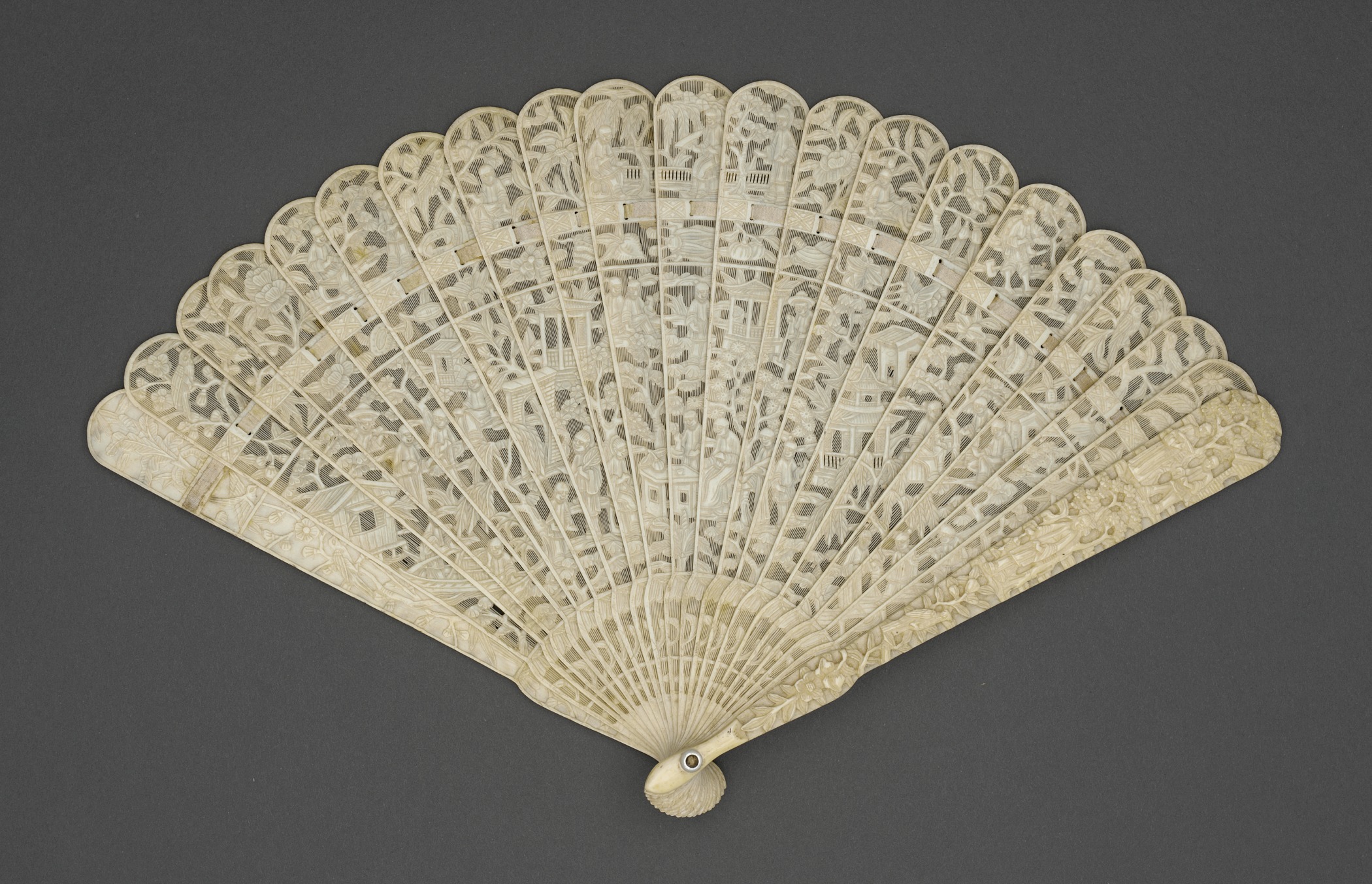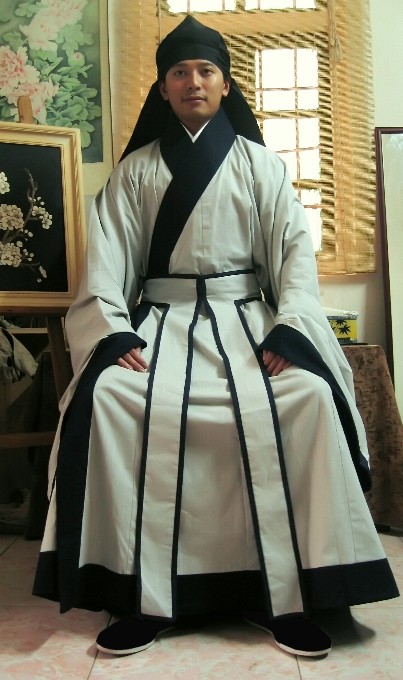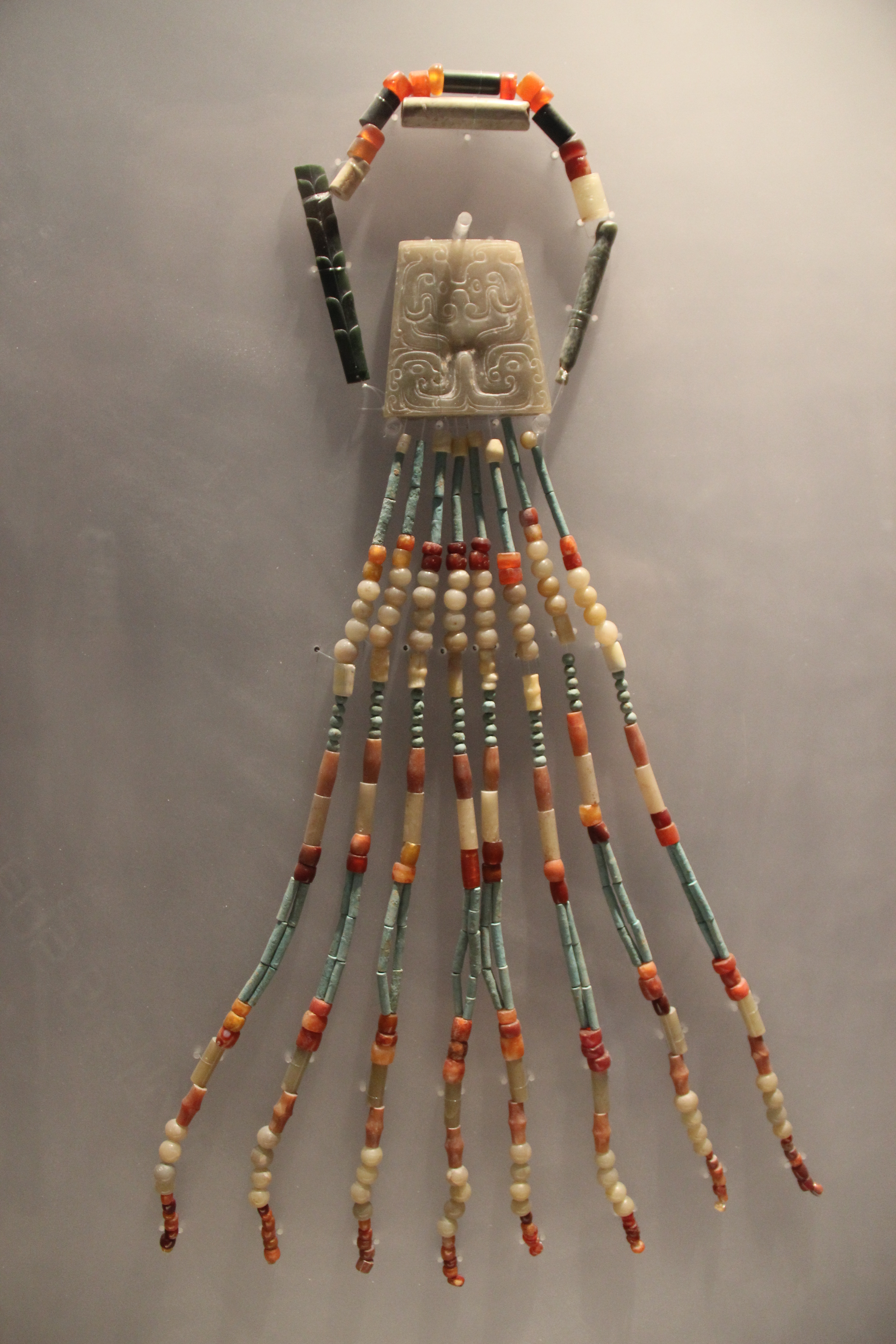|
Hanfu
''Hanfu'' () is the traditional styles of clothing worn by the Han Chinese. There are several representative styles of ''hanfu'', such as the (an upper-body garment with a long outer skirt), the (an upper-body garment with a long underskirt), the and the , and the (an upper-body garment with ku trousers). Traditionally, ''hanfu'' consists of a ''paofu'' robe, or a ''ru'' jacket worn as the upper garment with a ''qun'' skirt commonly worn as the lower garment. In addition to clothing, hanfu also includes several forms of accessories, such as headwear, footwear, belts, jewellery, and handheld fans. Nowadays, the hanfu is gaining recognition as the traditional clothing of the Han ethnic group, and has experienced a growing fashion revival among young Han Chinese people in China and in the overseas Chinese diaspora. After the Han dynasty, ''hanfu'' developed into a variety of styles using fabrics that encompassed a number of complex textile production techniques, part ... [...More Info...] [...Related Items...] OR: [Wikipedia] [Google] [Baidu] |
Hanfu Accessories
Hanfu accessories () refers to the various form of fashion accessories and self-adornments used and worn with throughout Chinese history. consists of many forms of miscellaneous accessories, such as Jewellery, jewelries, (), ribbons, shawls, scarves, and hand-held accessories, etc. Jewellery Chinese jewellery, including Chinese carved jade jewellery, often features Chinese symbols and iconography, and auspicious symbols and images, which are themselves rooted in Chinese culture, legends and mythologies, and philosophy. These symbols often reveal the Chinese traditions which have guided the Chinese civilization for thousands of years and which currently continue to remain in use in present-days. Jade culture is an important aspect of Chinese culture, reflecting both the material and spiritual culture of the Chinese people. Jade is deeply ingrained in Chinese culture and played a role in every aspect of social life; it is also associated with positive qualities and aspects such ... [...More Info...] [...Related Items...] OR: [Wikipedia] [Google] [Baidu] |
Ru (upper Garment)
Ru (), sometimes referred as (), (), and (), is a form of traditional Chinese upper garment, or coat, or jacket, which typically has a right closure; however, some of them can also have a front central opening. It is a daily upper garment for women of the Han Chinese ethnic. It can be worn in combination with a skirt in a style called , or a pair of trousers in a style called . The shape and structure of Chinese upper garment, generally referred as (), varied depending on the time period. Clothing style which overlaps and closes to the right originated in China and are referred as being (). The style of which overlaps at the front and closes on the right right in a y-shaped, is known as () and started to be worn in the Shang dynasty. Since then the had been one of the major symbols of the Sino Kingdom and eventually spread throughout Asia. The structure of the jackets worn in the late Qing shared some features of those worn by the Han ethnics in the Ming dynasty. Alth ... [...More Info...] [...Related Items...] OR: [Wikipedia] [Google] [Baidu] |
Beizi
Beizi (), also known as beizi () and chuozi (), is an item worn in traditional Chinese attire common to both men and women; it is typically a large loose outer coat with loose and long sleeves. It was most popular during the Song Dynasty, Ming Dynasty, and from the early Qing to the Mid-Qing dynasty. The beizi originated in the Song dynasty. In the Ming dynasty, the beizi was referred as pifeng (). When worn by men, it is sometimes referred as changyi (), hechang (), or dachang () when it features large sleeves and knotted ties at the front as a garment closure. Terminology Beizi (背子) literally means "person sitting behind". According to Zhu Xi, the beizi may have originally been clothing worn by concubines and maidservants, and it was then named after these people as they would always walk behind their mistress. History Origins The beizi originated in the Song dynasty; it is assumed that it was derived from the banbi, where the sleeves and the garment lengthe ... [...More Info...] [...Related Items...] OR: [Wikipedia] [Google] [Baidu] |
Ruqun
(;) is a set of attire in which consists of a short jacket typically called () worn under a long Chinese skirt called (). However, when use as a general term, can broadly describe a set of attire which consists of a separated upper garment and a wrap-around lower skirt, or (), in which ' () means the "upper garment" and the ' () means the "lower garment". In a broad sense, can include the () and (; ) in its definition. As a set of attire, the was worn by both men and women; it was however primarily worn by women. It is the traditional for the Han Chinese women. The and/or is the most basic set of clothing of Han Chinese women in China and has been an established tradition for thousands of years. Various forms and style of Chinese trousers, referred broadly under the generic term , can also be worn under the . Terminology The generic term () can be applied to any style of clothing consisted of a pair of upper and lower garments. The term is composed of the ... [...More Info...] [...Related Items...] OR: [Wikipedia] [Google] [Baidu] |
Aoqun
(;) is a set of attire in which consists of a short jacket typically called () worn under a long Chinese skirt called (). However, when use as a general term, can broadly describe a set of attire which consists of a separated upper garment and a wrap-around lower skirt, or (), in which ' () means the "upper garment" and the ' () means the "lower garment". In a broad sense, can include the () and (; ) in its definition. As a set of attire, the was worn by both men and women; it was however primarily worn by women. It is the traditional for the Han Chinese women. The and/or is the most basic set of clothing of Han Chinese women in China and has been an established tradition for thousands of years. Various forms and style of Chinese trousers, referred broadly under the generic term , can also be worn under the . Terminology The generic term () can be applied to any style of clothing consisted of a pair of upper and lower garments. The term is composed of the ... [...More Info...] [...Related Items...] OR: [Wikipedia] [Google] [Baidu] |
Shanku
(), sometimes referred as (), (), or () when used as a military attire, (), () and () when made out of coarse cloth, and also known as samfu in English or samfoo (pronunciation: ') in British English following its Cantonese spelling, is a generic term which refers to a two-piece set of attire in , which is typically composed of a (), a Chinese upper garment which typically overlaps and closes on the right side which could be called (), (), (), and a pair of long trousers ' (). As a form of daily attire, the was mainly worn by people from lower social status in China, such as labourers, shopkeepers, or retainers from wealthy household. The was originally worn by both genders. Up until the mid-20th century, it was popular in China and outside of China where it was worn by overseas Chinese in countries, such as Singapore, Malaysia, Suriname, etc. It is still worn in present-day China and can be found in rural areas. Terminology The term (), () or () typically refe ... [...More Info...] [...Related Items...] OR: [Wikipedia] [Google] [Baidu] |
Paofu
(), also known as () for short, is a form of a long, one-piece robe in , which is characterized by the natural integration of the upper and lower part of the robe which is cut from a single fabric. The term is often used to refer to the and the . The was worn since the Zhou dynasty and became prominent in the Han dynasty.' The was a unisex, one-piece robe; while it was worn mainly by men, women could also wear it. It initially looked similar to the ancient ; however, these two robes are structurally different from each other.'''' With time, the ancient disappeared while the evolved gaining different features in each succeeding dynasties; the continues to be worn even in present day. The term refers to the "long robe" worn by ancient Chinese, and can include several form of Chinese robes of various origins and cuts, including '','' , '','' ', ', '. Terminology The term () is composed of the Chinese characters 《》, which literally means "robe", and 《》which literal ... [...More Info...] [...Related Items...] OR: [Wikipedia] [Google] [Baidu] |
Hand Fan
A handheld fan, or simply hand fan, is any broad, flat surface that is waved back-and-forth to create an airflow. Generally, purpose-made handheld fans are folding fans, which are shaped like a sector of a circle and made of a thin material (such as paper or feathers) mounted on slats which revolve around a pivot so that it can be closed when not in use. Hand fans were used before mechanical fans were invented. On human skin, the airflow from handfans increases evaporation which has a cooling effect due to the latent heat of evaporation of water. It also increases heat convection by displacing the warmer air produced by body heat that surrounds the skin, which has an additional cooling effect, provided that the ambient air temperature is lower than the skin temperature – which is typically about . Fans are convenient to carry around, especially folding fans. Next to the folding fan, the rigid hand screen fan was also a highly decorative and desired object among the higher ... [...More Info...] [...Related Items...] OR: [Wikipedia] [Google] [Baidu] |
Shenyi
(; ; yr: ''sim.ui''), also called Deep garment in English, means "wrapping the body deep within the clothes" or "to wrap the body deep within cloth". The is an iconic form of robe in , which was recorded in and advocated in Zhu Xi's 《朱子家禮》. As cited in the , the is a long robe which is created when the ''"upper half is connected to the bottom half to cover the body fully"''. The , along with its components, existed prior to the Zhou dynasty and appeared at least since the Shang dynasty. The was then developed in Zhou dynasty with a complete system of attire, being shaped by the Zhou dynasty's strict hierarchical system in terms of social levels, gender, age, and situation and was used as a basic form of clothing. The then became the mainstream clothing choice during the Qin and Han dynasties. By the Han dynasty, the had evolved into two types of robes: the () and the ' (). The later gradually declined in popularity around the Wei, Jin, and Northern an ... [...More Info...] [...Related Items...] OR: [Wikipedia] [Google] [Baidu] |
Hanfu Footwear
Hanfu also includes accessories, such as footwear. There were many etiquette which rule people's daily lives, and this included the use and etiquette of shoes and socks wearing. Shoes Collectively, shoes are typically called ''lü'' (履) since the Han dynasty. In the Qin dynasty, shoes were referred as ''ju'' (屦)''.'' The word ''xie'' (鞋) eventually replaced the word ''lü'' to become a general name for shoes. Since the ancient times, Chinese shoes came in various kinds; there were leather shoes (made of tanbark and pelt), cloth shoes (made of silk, hemp, damask, brocade, and crepe), and straw shoes (made of leaves and stems of cattail, corn leaves, and kudzu), ''ji'' (屐; wooden clogs).'''' Han Chinese typically wore ''lü'' (regular shoes)'','' ''xi'' (shoes with thick soles), and ''ji'' (wooden clogs). Different shoes were worn based on their appropriateness for specific occasions; shoes also denoted the social ranks of its wearers. Lü (履) were worn for formal occasi ... [...More Info...] [...Related Items...] OR: [Wikipedia] [Google] [Baidu] |
Yupei
Yupei () is a generic term for jade pendants. Yupei were popular even before Confucius was born. Jade culture is an important component of Chinese culture, reflecting both the material and spiritual culture. Jade is deeply ingrained in Chinese culture and played a role in every aspect of social life; it is also associated with positive qualities and aspects such as purity, excellence, and harmony.Jade is even more valued than gold in Chinese culture. The history of the art of jade carving in China to make ornaments, including dress ornaments, extends back to before 5000 BC. Ancient Chinese held even greater importance to ''yupei'' after it was regarded as a moral integrity by Confucius. Yupei could be used as belt or waist ornaments (such as ''jinbu'' 禁步) and as necklaces which appeared as early as the Liangzhu culture. Strings of jade pendant are also used to decorate headwear, such as the mianguan. Terminology Yupei () is composed of the Chinese character ''yu'' () which ... [...More Info...] [...Related Items...] OR: [Wikipedia] [Google] [Baidu] |
Han Dynasty
The Han dynasty (, ; ) was an Dynasties in Chinese history, imperial dynasty of China (202 BC – 9 AD, 25–220 AD), established by Emperor Gaozu of Han, Liu Bang (Emperor Gao) and ruled by the House of Liu. The dynasty was preceded by the short-lived Qin dynasty (221–207 BC) and a warring interregnum known as the ChuHan contention (206–202 BC), and it was succeeded by the Three Kingdoms period (220–280 AD). The dynasty was briefly interrupted by the Xin dynasty (9–23 AD) established by usurping regent Wang Mang, and is thus separated into two periods—the #Western Han, Western Han (202 BC – 9 AD) and the #Eastern Han, Eastern Han (25–220 AD). Spanning over four centuries, the Han dynasty is considered a golden age (metaphor), golden age in Chinese history, and it has influenced the identity of the History of China, Chinese civilization ever since. Modern China's majority ethnic group refers to themselves as the "Han Chinese, Han people", the Sinitic langu ... [...More Info...] [...Related Items...] OR: [Wikipedia] [Google] [Baidu] |









